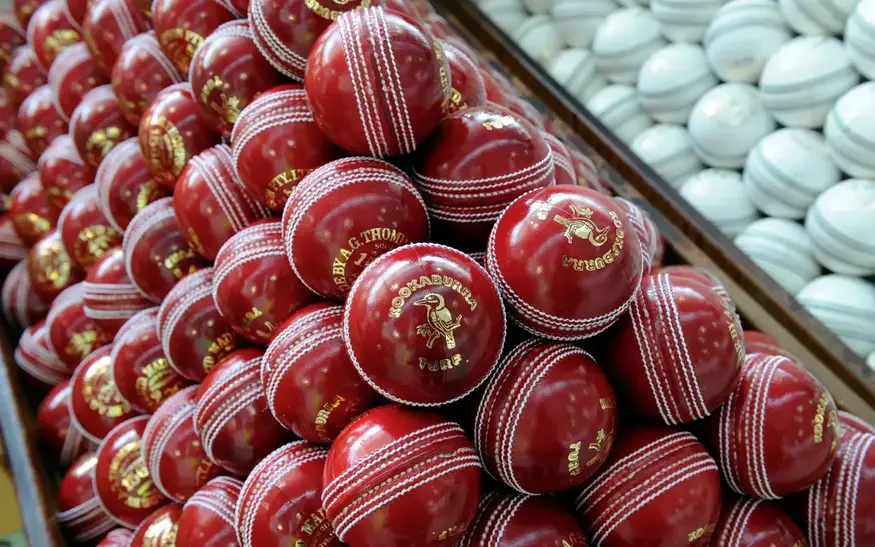Test cricket is often regarded as the purest form of the sport, where the balance between bat and ball shapes the game. However, a glaring flaw in the game’s administration has continued to cause controversy over the years: the ball-changing system. A seemingly trivial aspect of the sport has evolved into a contentious and inconsistent practice that has the potential to influence the outcome of a match, sometimes rendering the system farcical. Recent incidents have again brought this issue to the forefront, raising calls for reforms to improve fairness and clarity in the game.
In this article, we will delve deep into the problems with the current ball-changing system in Test cricket, examine how it can distort the game’s balance, and propose solutions to fix this fundamental issue that has long plagued cricket’s longest format.
The Ball’s Role in Test Cricket
The cricket ball is arguably as important as the pitch conditions in determining the course of a Test match. As it ages, it behaves differently—swinging in the air, gripping on certain surfaces, or flattening out to make batting easier. In a well-balanced Test, teams rely on the natural wear and tear of the ball to extract key advantages. Bowlers depend on the ball’s condition to generate reverse swing or conventional swing, while batters prefer a softer, older ball that doesn’t bounce as much.
Given this, the condition of the ball significantly influences how matches progress. When the system for replacing balls mid-match is flawed, it can dramatically alter the balance between bat and ball, affecting not only that specific session but potentially the entire match.
The Current Ball-Changing System
In Test cricket, the ball must last for 80 overs, after which teams have the option of requesting a new ball. However, the ball is often replaced much earlier due to damage, unnatural wear, or because it becomes unfit for play.
Current ball-changing rules state that if the ball becomes damaged or loses its shape, the umpires will replace it with a ball that has been similarly used. Ideally, this replacement should closely match the condition of the original ball—whether it’s a 20-over-old ball or a 50-over-old ball. But the reality often strays far from this ideal. The “similar ball” can either favor the batting team by being harder than the original ball, allowing easier stroke play, or it could suit the bowlers by being far rougher than expected, thus swinging or spinning more sharply.
This inconsistency in finding an appropriate replacement has become a point of frustration for players and fans alike, with the random selection of balls turning into a gamble with significant consequences.
Notable Controversies Around Ball Changes
In recent years, several high-profile controversies surrounding ball changes have cast a spotlight on the issue.
England vs Australia, Ashes 2023
One of the most infamous recent examples occurred during the 2023 Ashes series in England. In the final Test at The Oval, Australia was chasing a challenging target, with their batsmen seemingly comfortable against a softened ball that had been in play for over 35 overs. However, after the ball was deemed unfit and replaced, the new ball swung drastically, leading to the quick dismissals of key Australian batsmen and turning the game in England’s favor.
Players and commentators were quick to highlight the noticeable difference in the condition of the replacement ball. Even though it was supposed to match the wear of the old ball, it behaved as if it were much newer, effectively handing England a game-changing advantage. The uproar from the Australian camp and the subsequent debate on social media underscored how one poorly administered ball change can alter the outcome of a Test match.
India vs South Africa, 2021
Another incident occurred during the 2021 series between India and South Africa. The Indian bowling attack had been using a ball that had seen significant wear by the 45th over. When the ball was replaced, the new one offered exaggerated bounce and movement off the seam, which many argued was inconsistent with the state of the game. South Africa’s batting lineup collapsed, and the conversation once again turned to how improper ball changes can unduly benefit one side.
These instances are just the tip of the iceberg in a long history of controversies surrounding ball changes in Test cricket. The unpredictability and inconsistency of the current system have left players feeling that the process is not always impartial.
Flaws in the Current System
The crux of the problem lies in how umpires and match officials select a replacement ball. Once the original ball is deemed unfit for play, the umpires are presented with a box of previously used balls. These balls are meant to correspond to the number of overs bowled, but in practice, it’s nearly impossible to find a perfect match.
Inconsistent Ball Age
One of the most glaring issues is the varying ages and conditions of the replacement balls. A ball used for 30 overs on a dusty, abrasive pitch in the subcontinent will look entirely different from one used for the same number of overs in overcast English conditions. The fact that umpires are often forced to choose from a limited pool of balls—regardless of the conditions under which they were used—results in wildly inconsistent replacements.
Subjectivity in Selection
Another flaw is the subjective nature of selecting a replacement. While umpires aim to find a ball that matches the wear and tear of the original, their judgment is inherently subjective. What one umpire deems a fair replacement may seem advantageous or disadvantageous to one of the teams. Moreover, the players have no say in the decision, leading to frustration when the replacement doesn’t match the original.
Impact on Fair Play
The random nature of ball changes threatens the fairness and integrity of the game. A replacement ball that swings or spins more than the original can give bowlers an unfair advantage, while a ball that behaves more like a new one can tilt the balance in favor of the batting side. Test cricket’s inherent competitiveness is based on maintaining equilibrium between bat and ball, and when this is disrupted by inconsistent ball changes, the game’s fairness is jeopardized.
The Farcical Nature of the Ball-Changing Process
What makes the system not just flawed but farcical is the visual aspect of it. Watching umpires huddle around a box of old balls, trying to find the best match, often feels like a random exercise. In some cases, balls that have been used in completely different conditions are chosen as replacements, leading to drastically different gameplay.
The lack of a clear, standardized system for selecting a replacement ball adds to the confusion. This randomness turns what should be a methodical process into a farcical spectacle, leaving both players and spectators unsure about the outcome. In a sport that values precision, this is a glaring oversight.
The Need for Reform
It’s evident that Test cricket’s ball-changing system is in desperate need of reform. So, what can be done to address this issue?
1. Standardization of Ball Replacement Process
The process of selecting replacement balls needs to be more standardized and transparent. Instead of leaving the decision entirely up to the umpires, a more rigorous process should be developed. This could involve preparing a larger pool of match-condition balls, categorized by the number of overs bowled and the type of pitch they were used on. By ensuring a wider selection of balls that have been used in similar conditions, umpires can make a more accurate choice.
2. Technological Assistance
Cricket has already embraced technology in areas like DRS (Decision Review System) and Hawk-Eye for LBW decisions. It may be time to introduce similar technological aids for ball changes. For instance, cameras and algorithms could help assess the wear and condition of the original ball, matching it more closely with a suitable replacement. This would remove some of the subjectivity from the decision-making process.
3. Ball Manufacturing Standards
It might also be worth considering higher consistency standards from ball manufacturers. By ensuring that balls wear down in a more predictable and uniform manner, cricket boards can reduce the likelihood of a poorly matched replacement ball swinging or spinning more than expected. This could involve setting specific guidelines on how balls are produced and tested before being used in international matches.
Conclusion
The ball-changing system in Test cricket, as it currently stands, is flawed and ripe for exploitation. The inconsistency with which balls are replaced has led to numerous controversies, with players, commentators, and fans frequently expressing frustration. The system, which should be fair and impartial, often feels random and farcical, influencing the outcome of matches in ways that can feel unjust.
Reforming this process is critical for the integrity of Test cricket. Standardizing the selection process, introducing technology to assist umpires, and improving ball manufacturing standards could go a long way in addressing this long-standing issue. In a game where the smallest details matter, the condition of the ball should not be left to chance. By fixing the ball-changing system, Test cricket can preserve the delicate balance between bat and ball that makes it such a captivating sport.





